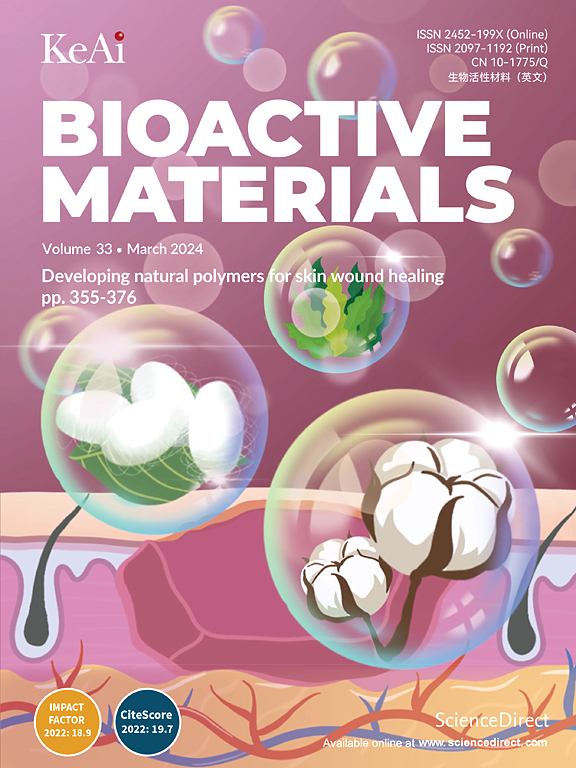Photo-generating Type-I ROS and aryl radicals by mitochondrial-targeting oxime-ester photogenerator for pyroptosis-mediated anti-hypoxia photoimmunotherapy
IF 18
1区 医学
Q1 ENGINEERING, BIOMEDICAL
引用次数: 0
Abstract
Pyroptosis is an inflammatory form of programmed cell death with great potential in cancer immunotherapies. Photodynamic therapy (PDT) represents a promising treatment modality to trigger pyroptosis. However, the hypoxic microenvironment inside the tumors often induces limited therapeutic efficacy. Herein, in this work, the first type of mitochondrial-targeting oxime-ester photogenerator (T-Oximer) was constructed to boost type-I ROS/aryl free radicals which could induce DNA damage by DNA cleaving and facilitate high-efficiency pyroptosis-mediated photoimmunotherapy. Detailed mechanism investigations revealed that T-Oximer could produce aryl free radicals via photolysis reaction and generate type-I ROS (O2•− and •OH) based on the type-I electron transfer process. Meanwhile, T-Oximer could accumulate in the mitochondria, boost mitochondrial radicals, and damage mitochondria in hypoxic tumor cells. Of peculiar interest, T-Oixmer could bind with DNA and cleave DNA to induce DNA damage. Combined mitochondrial damage with DNA cleavage, T-Oximer can initiate pyroptosis, activate the ICD effect, and trigger robust systemic antitumor immunity for efficient tumor regression and metastasis suppression. Our finding provides a new strategy for constructing oxygen-independent photogenerator for high-efficiency pyroptosis-mediated anti-hypoxia photoimmunotherapy.

求助全文
约1分钟内获得全文
求助全文
来源期刊

Bioactive Materials
Biochemistry, Genetics and Molecular Biology-Biotechnology
CiteScore
28.00
自引率
6.30%
发文量
436
审稿时长
20 days
期刊介绍:
Bioactive Materials is a peer-reviewed research publication that focuses on advancements in bioactive materials. The journal accepts research papers, reviews, and rapid communications in the field of next-generation biomaterials that interact with cells, tissues, and organs in various living organisms.
The primary goal of Bioactive Materials is to promote the science and engineering of biomaterials that exhibit adaptiveness to the biological environment. These materials are specifically designed to stimulate or direct appropriate cell and tissue responses or regulate interactions with microorganisms.
The journal covers a wide range of bioactive materials, including those that are engineered or designed in terms of their physical form (e.g. particulate, fiber), topology (e.g. porosity, surface roughness), or dimensions (ranging from macro to nano-scales). Contributions are sought from the following categories of bioactive materials:
Bioactive metals and alloys
Bioactive inorganics: ceramics, glasses, and carbon-based materials
Bioactive polymers and gels
Bioactive materials derived from natural sources
Bioactive composites
These materials find applications in human and veterinary medicine, such as implants, tissue engineering scaffolds, cell/drug/gene carriers, as well as imaging and sensing devices.
 求助内容:
求助内容: 应助结果提醒方式:
应助结果提醒方式:


